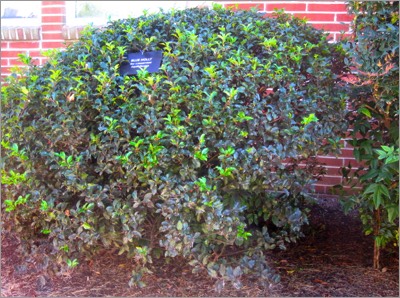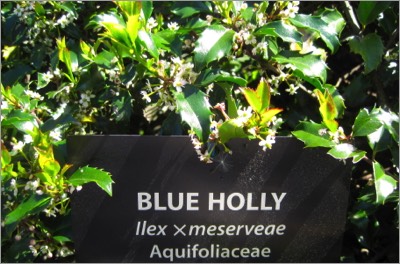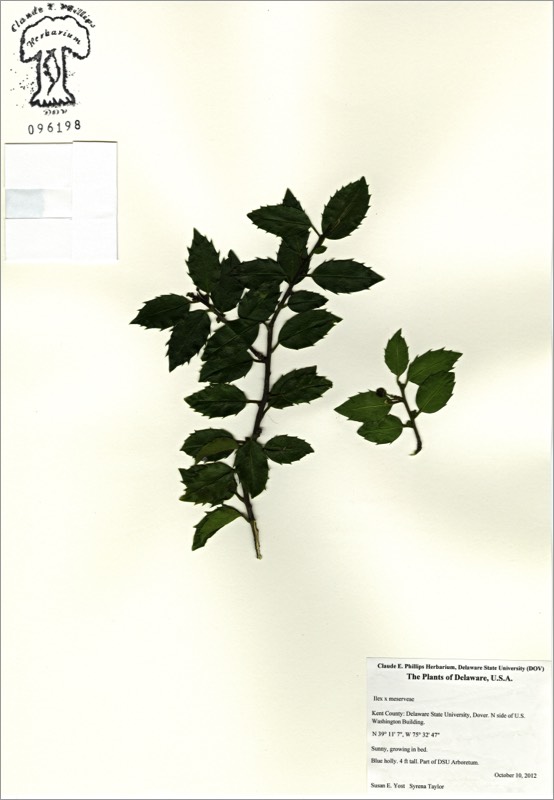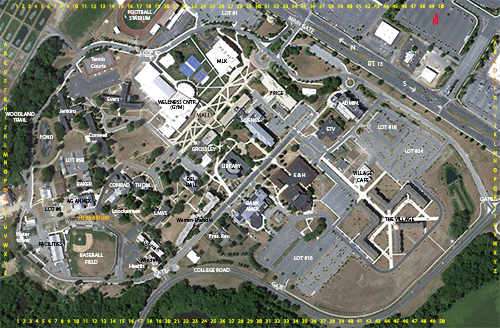*Blue holly, Meserve holly


*Ilex ×meserveae
BLUE HOLLY
Aquifoliaceae
Location: map coordinates T-8 (north side of Washington Building),
N 39°11'7'' W 75°32'47''
Planting history: presently unknown.
Description:
*Non-native species (not native to Delaware)
BLUE HOLLY
Aquifoliaceae
Location: map coordinates T-8 (north side of Washington Building),
N 39°11'7'' W 75°32'47''
Planting history: presently unknown.
Description:
- evergreen shrub
- etymology: Ilex from the Latin name for holm oak/holly oak (Quercus ilex); meserveae after Mrs. Kathleen [F. Leighton] Meserve, of NY, who produced this hybrid (purportedly of I. rugosa and I. aquifolium, or I. cornuta and I. rugosa)
- the common name “blue holly” comes from the bluish-purple stems; varieties include ‘Blue Boy’ and ‘Blue Girl’; ‘Blue Prince’ and ‘Blue Princess’
- also known as Meserve hollies
- leaves spiny-toothed, shiny
- polygamo-dioecious (separate male and female trees, with some perfect flowers); flowers small, whitish
- fruit red, berry-like drupe (stone fruit)
- popular ornamental
*Non-native species (not native to Delaware)


HIT REFRESH TO START LOCATION GRAPHIC